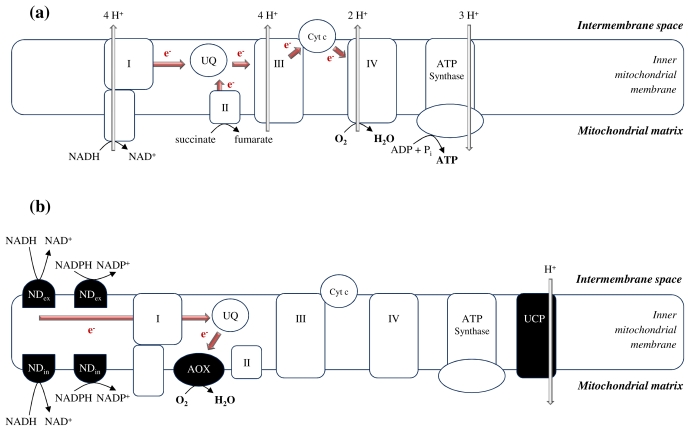Figure 1.
Simplified overview of the components involved in conventional and alternative reactions of mitochondrial electron transport and oxidative phosphorylation in plants. (a) In the “standard” cytochrome pathway, electrons pass from respiratory complexes I (NADH dehydrogenase) and II (succinate dehydrogenase) to the electron carrier ubiquinone (UQ). Via complex III (ubiquinol-cytochrome bc1 reductase) and cytochrome c (cyt c), O2 is ultimately reduced to H2O at the level of complex IV (cytochrome c oxidase). The ATP synthase complex catalyzes the formation of ATP in the mitochondrial matrix driven by the proton gradient resulting from electron transfer; (b) In addition, plant mitochondria contain an alternative pathway consisting of a non-proton-pumping alternative oxidase (AOX) as well as alternative NAD(P)H dehydrogenases (NDs) on either the external (NDex) or internal (NDin) side of the inner mitochondrial membrane. Electrons are passed from the alternative NDs to ubiquinone and directly to AOX reducing O2 to H2O. Uncoupling proteins (UCPs) are able to dissipate the proton electrochemical gradient over the inner membrane created by the transfer of electrons, thereby acting as an alternative path to mitochondrial oxidative phosphorylation.

